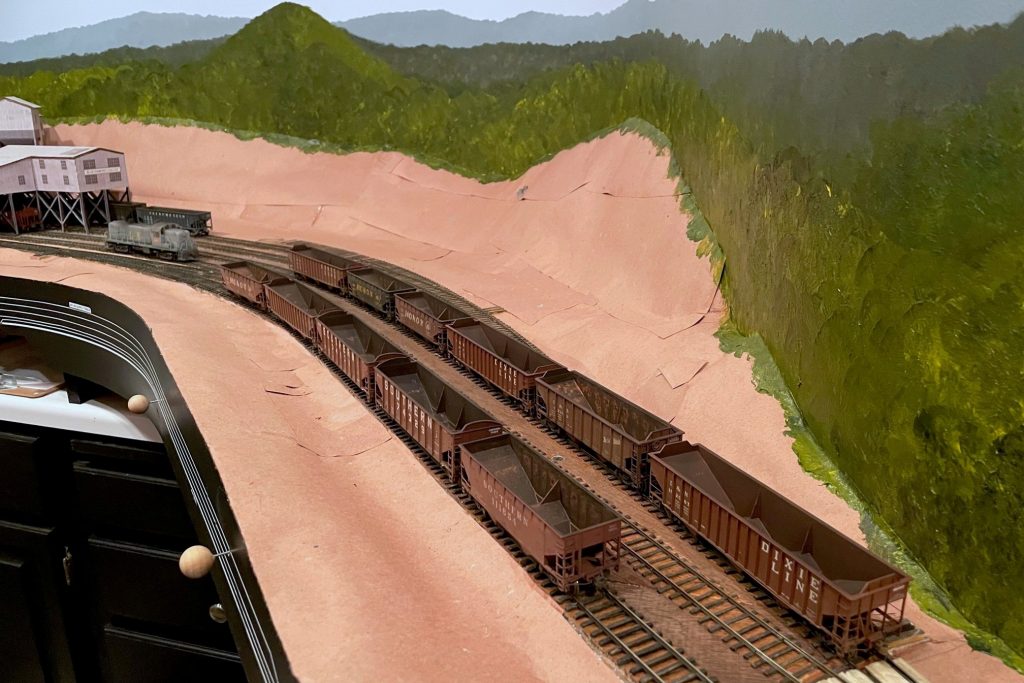
It’s time to introduce another “class” of hoppers graduating from the workbench to the layout. Looking back I see the last class of hoppers graduated in April of ’22, so I guess I’m averaging about a dozen hoppers a year… got a ways to go! This class was fun because most of the cars are for the L&N trains on the layout. Previous to this, most of my L&N cars were of mid-’70s paint and markings, so I focused on some cars to represent the mid-’60s to early ’70s including four PS3 70T cars, a PS3 50T car, and three ex-Monon two-bays (ok, I don’t need 3 Monon hoppers, but they came as a set, and I got them for cheap so…). The three remaining cars represent Southern prototypes including two ex-Central of Georgia 70T cars and an old 50T offset in red with Roman lettering.

The easiest cars of the bunch were the 70T PS3s which are all factory-painted Tangent cars with excellent detail. The four cars all came lettered in the 73000 series, and after looking through pictures, I decided they’d also be good to represent the 150000 and 153000 class cars that were also delivered in the “DIXIE LINE” paint scheme. For hopper 152067, it was as simple as changing the number and build dates. I scraped off the old lettering using an X-Acto chisel blade–it leaves a little shiny spot, but this is easy to disguise with weathering. Hopper 153708 was a little more involved because this class came with the later style tow loops at the lower corners of the car and roller bearing trucks. I snipped off the modeled loops, cut new corner tow loops from .015″ styrene, glued them on and painted them. A set of Bowser roller bearing trucks and metal wheels fit well and kept the car at the proper height.
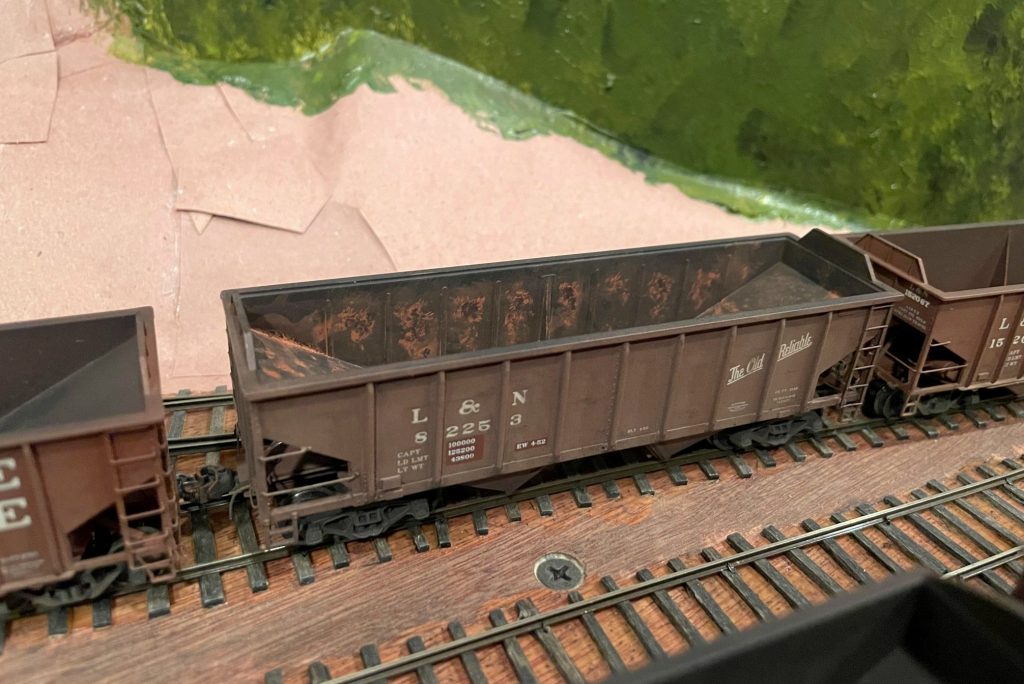
The 50T PS3 is a factory-painted Walthers Trainline kit which is an updated version of a VERY old model kit that’s been around since probably the 60s and has pretty clunky detail. I remedied the worst of the detail issues by cutting off the ladders and replacing them with DA ladders and added new scratchbuilt heap shields. A new Kadee brake wheel and some new wire details like brake gear piping, grabs, cut bars and train line hose finished the detailing.

The Monon 50T hoppers are pretty much stock, factory painted Atlas hoppers. I used my favorite “grab narrowing” trick where I carefully cut away the back of the ladder grab irons with a sharp No 11 X-Acto blade. This makes the detail look much finer from any distance and is easier and quicker, in my opinion, than completely replacing the grabs with wire. I did add some wire grabs on the lower ends along with some cut levers and train line hoses.
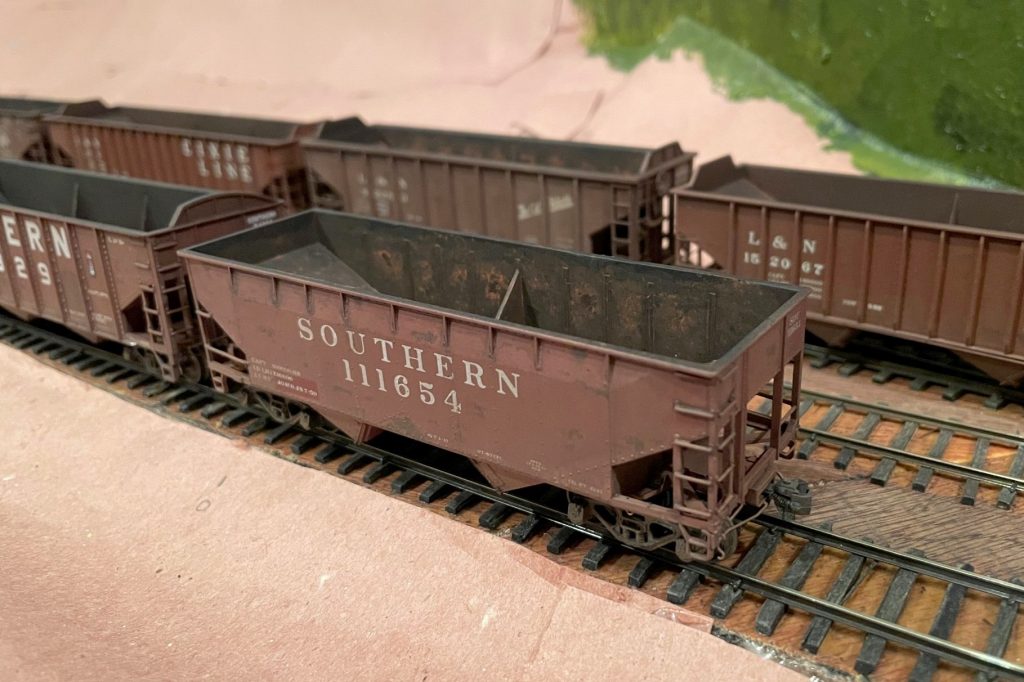
The Southern 50T offset hopper is a factory-painted Athearn model from a set of six (more of these to do). The roman lettering was common in the early ’60s and was almost entirely phased out by 1970. I wanted to model it in its last year or so of old paint. Detail-wise, it got the narrowed grab treatment, a new Kadee brake wheel, and a few wire details.
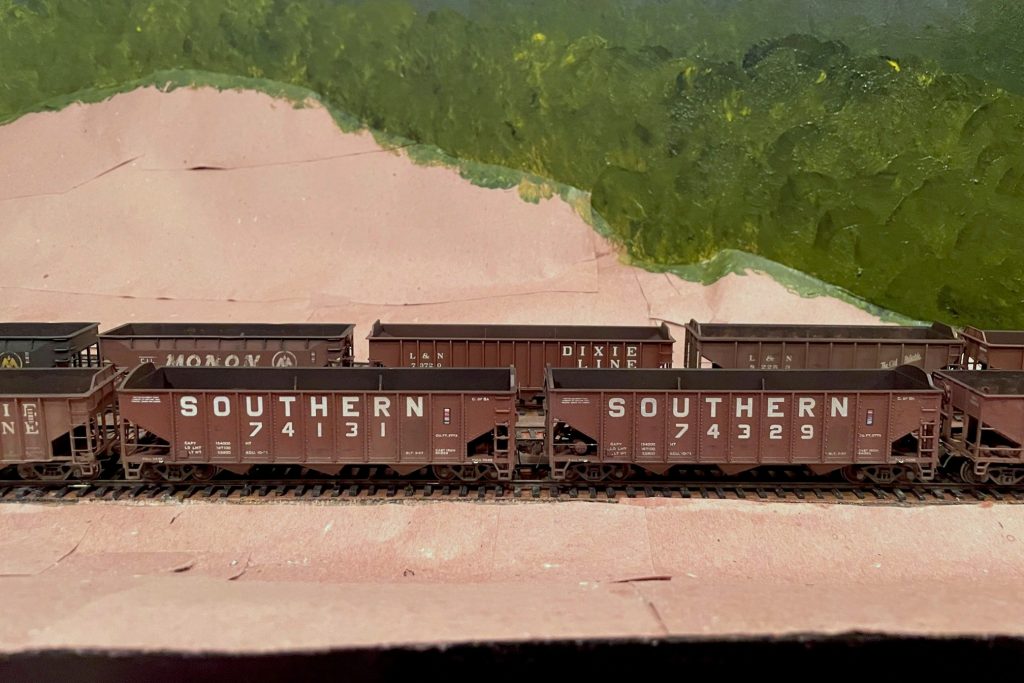
The most work-intensive of the bunch were the two ex-CofGa 70T hoppers. These began as factory-painted Roundhouse kits (one used, one “new” but very old stock). Up to this point, I’ve been content to use the Atlas Trainman version of this car which is a pretty good stand-in. I also use the Atlas cars for my “primary” Southern 70T hopper fleet, and in reality, the Central of Georgia cars are 14″ shorter in length (40’6″) than the Southern’s big 70300-73749 class of cars (41’8″)… crazy me, I thought “wouldn’t it be cool to have the ex-CofGa hopper be noticeably shorter in a lineup?” Let’s just say these cars need a LOT of work to bring them up to modern standards and to correct the most egregiously noticeable detail faults and missing details. Lots of styrene, cuts, and extra details later, these cars emerged. Perhaps I’ll do a whole write-up on them [see the full write-up here], but they do, indeed, look cool and distinct in a lineup of Southern 70T cars… was it worth it? Only to a hopper freak like me.
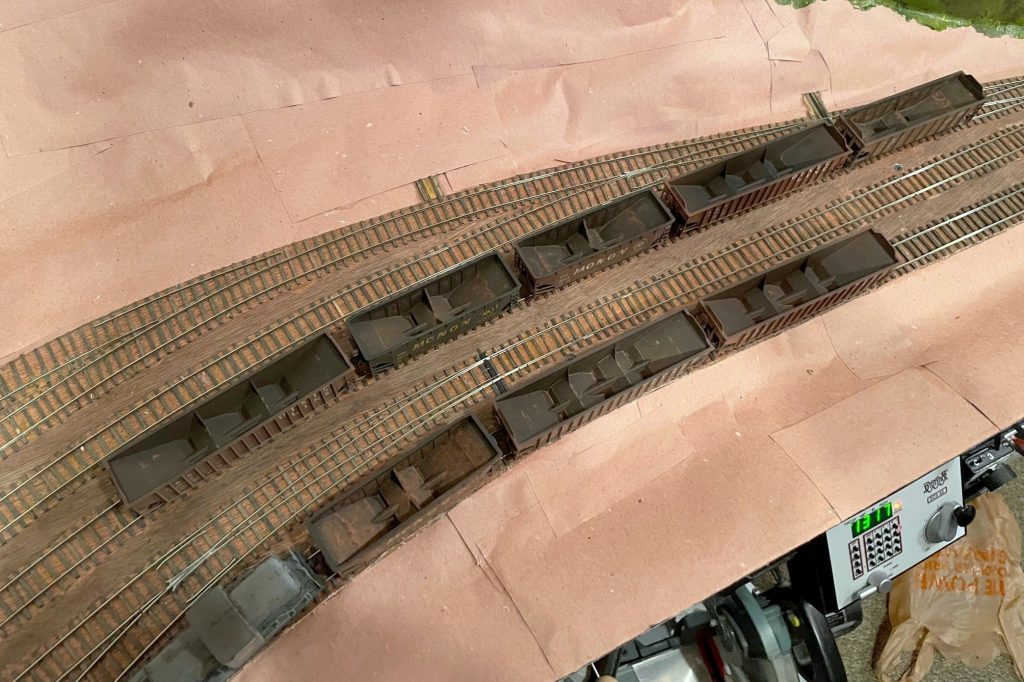
Most of these models represent cars that were already 10-25 years old when I’m modeling them, so they got some pretty heavy weathering. I did some dry brushing of rust spots on the exterior. The Monon cars got some car-colored dry brushing to fade portions of the big “MONON” using pictures as a guide. On several of the cars, I masked off portions of the data (LT WT and LD LMT) and shop markings with rectangles of tape–when peeled off after the airbrushing, it looks like re-stenciled data which is appropriate for cars this age. I airbrushed them all with a light spray of flat tan to fade them a little and add some dirt, especially around the trucks and bays. I also airbrushed some flat black into the interiors–the older the car being represented, the more black it got. Next I used a wash of black with a little tan on the outside to darken the seams and corners and dull things down. On the inside, I used a wash of Vallejo “orange rust” and water and dabbed it on heavily with a big brush, letting it dry in splotches and in the corners (some got a couple coats). For the oldest cars, I drybrushed the interior with orange rust, particularly along edges and panel lines. Finally, I put dabs of Vallejo “dark rust” into the centers of the orange spots to make it look like an old but growing rust spot with fresh orange rust along the outsides and dark rust in the middle.
Overall, I’m pretty happy with the additions, and it’s fun to have a few “rust buckets” running around in the trains. Can’t wait to load ’em at the next ops session!
